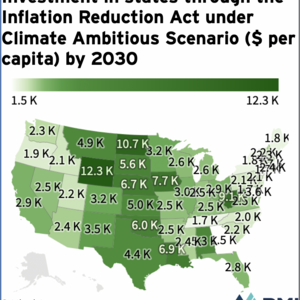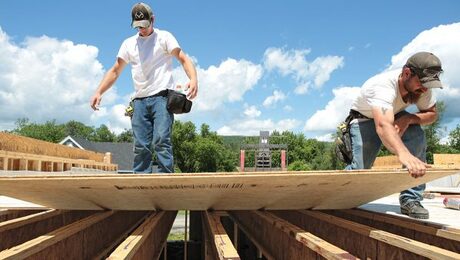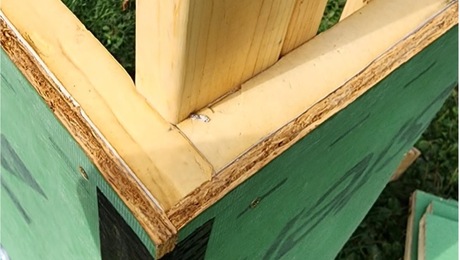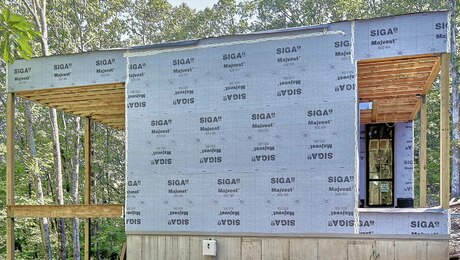
You’ve heard it before, but it bears repeating: the Inflation Reduction Act is a historic piece of legislation, and for all the good reasons. Not only is it the single largest investment in climate action and clean energy solutions in American history, but it is one of the largest investments in the U.S. economy ever made. The IRA was designed to perform as an incentive machine, deploying billions in clean investments throughout virtually every industry and market sector. Clean energy, clean manufacturing, clean vehicles, and clean buildings are all coming online at accelerated rates via new bills, grants, and tax incentives.
One question that has followed the IRA around since it became law, in August 2022, is how all those billions upon billions will wind up where they need to go. Another concern that cropped up, at least in the early months, was whether the IRA would be funneling dollars into the communities most in need of investment, versus just fabricating tax breaks that incentivize single-family homeowners to buy EVs, install solar panels, and switch to heat pumps.
As implemented thus far, the IRA has largely managed to assuage such concerns. In one example, prior to the IRA’s passage, according to U.S. Treasury figures, “an average of $2 billion per month of clean electricity investment was announced in areas eligible for the Energy Community Bonus” (a supplementary tax credit for Energy Communities, which are areas historically reliant of fossil fuels for employment and tax revenue) and another “$2.5 billion per month throughout the rest of the U.S.” Post-IRA investments have increased to $4.5 billion per month in Energy Communities and $3.5 billion everywhere else.
First-of-its-kind green financial network
One of the IRA’s biggest funding mechanisms is the $27 billion Greenhouse Gas Reduction Fund, which gives the Environmental Protection Agency (EPA) enormous lending power to award grants to “mobilize financing and leverage private capital for clean energy and climate projects.”
Last April, the Biden-Harris Administration and the EPA announced $20 billion in awards designed to prop up a “national financing network that will fund tens of thousands” of such projects, with a focus on “low-income and disadvantaged communities.” (The remaining $7 billion is earmarked for grants for deploying solar energy in low-income households.)
Of those funds, $14 billion will go toward a National Clean Investment Fund (NCIF), in which awardees will partner with the private sector and community organizations to enact accessible financing for clean energy projects. The Climate United Coalition ($6.97 billion), the Coalition for Green Capital ($5 billion), and Power Forward Communities ($2 billion) are the three recipients of the NCIF grants. In a statement from Coalition for Green Capital CEO Reed Hundt, the Greenhouse Gas Reduction Fund represents “the largest single capitalization of green banks in any country in the world. The United States now can lead all nations in showing how public-private investment can deliver cheap clean power faster than anyone has predicted—and can focus this new investment primarily on transforming the power platform in every low-income and disadvantaged community.”
The remaining $6 billion has been awarded to five financial institutions as part of the Clean Communities Investment Accelerator (CCIA), a program that provides grants to hub non-profits, which in turn deliver funding and technical assistance to non-profit affiliated lenders working in low-income and disadvantaged communities.
One of those hub organizations, Appalachian Community Capital (ACC), is a Community Development Financial Institution (CDFI) that was awarded $500 million. ACC’s CEO Donna Gambrell, who spoke with GBA over Zoom, indicated that $400 million of that will go to community lenders (up to $10 million per lender), upon submitting successful applications, and be deployed across three categories: public transportation, distributed energy, and buildings (all types).
“We’re an intermediary CDFI,” Gambrell says. “We raise capital for members who are located and doing business in the Appalachian region.” She is quick to emphasize the scope of that region, which includes 26 million people living in 423 counties across 13 states. With that in mind, Gambrell concedes that with such reach comes a lack of knowledge for how smaller communities can and must use those funds. We rely on our community lenders to know what their communities need up front, she says. “This is about saving money. It’s about having a high impact in low-income communities.”
Arguably the most important feature of these grants is their emphasis on collaboration. Together, the three NCIF awardees represent more than a dozen coalition partner organizations that exist solely to deliver clean air, energy independence, and economic resiliency, either via green bank loans or related means. The five CCIA awardees, meanwhile, represent intermediary CDFIs that now have the expanded wherewithal to supplement hundreds of other CDFIs, both large and small, throughout the U.S. (There are nearly 1500 CDFIs operating in the U.S. today.) Not only does this present enormous potential for collaboration across market sectors and lending mechanisms, but the IRA’s Greenhouse Gas Reduction Fund is structured in such a way that encourages partner organizations to join forces.
Currently, no green bank exists at the federal level. (Several states, including California, Colorado, Connecticut, Nevada, New York, and others, have been operating their own green banks for at least the last two years, and some even longer.) And since federally funded green energy investments have historically relied on the whim of partisan legislators, green banks are still the best bet for financing large-scale renewable energy production and the like.
While the combined $20 billion in NCIF and CCIA grants don’t technically constitute a centralized green bank, the resulting gestalt now represents a green bank aggregate of sorts, which should mobilize enough private capital in service of creating even more green banks at the state level. After all, green banks were founded on the principle of less risk, more reward. Pump enough money into that financial model and all of a sudden accelerating the clean energy economy looks like a sound investment.
Going beyond 40
The Greenhouse Gas Reduction Fund was established to further the Administration’s Justice40 Initiative, which codified the goal of ensuring at least 40% of “the overall benefits of certain Federal climate, clean energy, affordable and sustainable housing, and other investments flow to disadvantaged communities.” The EPA responded in kind by requiring the same percentage of National Clean Investment Funds, at minimum, go to those very communities.
Encouragingly, the three NCIF grant awardees have established practices that well exceed the 40% threshold. According to the White House, nearly 60% of NCIF funds will flow to communities that need it most. The Climate United Fund, for example, will direct its nearly $7 billion at “harder-to-reach market segments” like small businesses and small farms, “with at least 60% of its investments in low-income and disadvantaged communities, 20% in rural communities, and 10% in Tribal communities.” Power Forward Communities’ coalition, meanwhile, has stated that “at least 75% of investments” will go toward disadvantaged communities for the purposes of finding “affordable solutions for single-family and multi-family housing owners and developers.”
When it comes to the Clean Communities Investment Accelerator, just by virtue of how and where CDFIs operate, helping communities that have historically been excluded from traditional banking and investing options, Justice40 is effectively built into the CCIA’s DNA, and then some. “Low-income communities, communities of color, Native lands. These are all communities that have been outside the financial mainstream for decades, for generations,” Gambrell says. “The role of the [Community Development Financial Institution] is often to be a kind of on-ramp. We want to get people on the highway. We want to give them the opportunity to build wealth. To build generational wealth.”
_______________________________________________________________________
Justin R. Wolf is a Maine-based writer who covers green building trends and energy policy. His first book, Healing Ground, Living Values: Stanley Center for Peace and Security, was just published by Ecotone.
Weekly Newsletter
Get building science and energy efficiency advice, plus special offers, in your inbox.















0 Comments
Log in or create an account to post a comment.
Sign up Log in